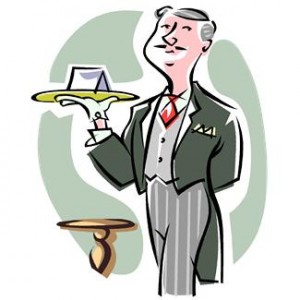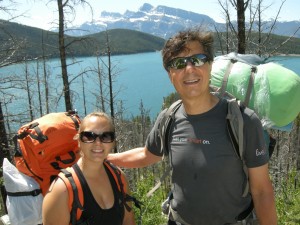♬ We need a hint to know we’re on the right track…♬
Lyrics, music and recorded by http://en.wikipedia.org/wiki/José_González.
The Director of Land Titles has required certain land title documents to be filed electronically. Phase One of Required E-filing is now in effect.
These documents are included in some of the most common transactions submitted to the Land Title Office:
- Form A – Transfer, Form B – Mortgage, Form C – Charge and Form C – Release effective January 16, 2012.
- Posting plans and associated applications and certificates effective July 1, 2011.
Detailed practice information about Required E-filing and EFS training resources are available as follows:
- Consult the Required E-filing webpage.
- Read the Director’s Requirements to File Land Title Forms Electronically (DR 06-11).
- Review Frequently Asked Questions about EFS and Required E-filing.
- Consult a checklist to get started using EFS.
Upon completion of all phases, most documents and plans will be filed electronically with a very small number filed manually in hardcopy form.
This blog post is to remind those readers in BC that help is at hand in order to move into mandatory e-filing.
Due to overwhelming demand, Dye & Durham have added an additional date for their complimentary Hints and Tips on Supported Land Title E-Filing Webinar. This additional date is February 2nd, 2012.
This webinar will include:
- Review all necessary land e-filing requirements;
- Hints and tips on how to prepare and submit e-forms to manage the e-filing process via ETRAY;
- Staying up to date with EFS bulletins and changes.
For registration details please click on the link below.
http://www.dyedurhambc.com/public/Hints_and_Tips_E-Filing_Webinar_Feb_2_2012.pdf.
It is comforting to know that help is at hand with hints and tips when you need them to keep you on track!
♬ This is real, this is me
I’m exactly where I’m suppose to be, now
Gonna let the light, shine on me
Now I’ve found, who I am
There’s no way to hold it in
No more hiding who I want to be
This is me…♬
Lyrics and music by: Andy Dodd and Adam Watts, recorded by Demi Lovato.
This is a guest post from Beth Flynn’s Leadership Moments newsletter at the OSU Leadership Center. It continues the dialogue in the area that I believe is so important for lawyers today: Leadership. In particular, it discusses how to be authentic in a leadership role.
Dictionary.com defines Authentic (adjective) as: not false or copied; genuine; real: an authentic antique. I think this is the essence of leadership: you must find your own voice and style – copying someone’s else’s leadership style won’t work. Here is Beth’s post on being an authentic leader:
- Just do it. Invest in yourself by doing the work you must do to truly know who you are – your life story, the things that shaped you, and your disappointments and failures. Own yourself and who you really are. This is what allows others to connect. There is no one who can do this work for you.
- Trust the power of allowing others to know you. Even though it can seem scary, and it requires the willingness to be vulnerable, it is the key to influence. The real you – no imitations or role-playing – is what people want to know, and the real you is the person to whom they will commit.
- Find the courage to be yourself when the pressure of leadership tempts you otherwise. There is nothing more comforting to others, especially in times of stress, than to realize that you know and trust yourself.
- Declare yourself worthy, adequate, and deserving of the job you have. Don’t doubt yourself if you expect others not to.
- Be careful about “trying” too hard to be authentic. Being yourself should feel easier than being the image you think others want of you. Don’t be authentic in the same way someone else is – do it your way.
- Seek feedback from a wide group of your followers. Try to use it diagnostically, to improve, not as a threat to your self-image, self-esteem, or self-worth.
- Stand on personal courage to create leaderships. You will be rewarded with loyalty (Hamm, 2011, p. 29).
From: Hamm, J. (2011). Unusually excellent: the necessary nine skills required for the practice of great leadership. San Francisco: Jossey-Bass.
Unusually Excellent is available from the OSU Leadership Center. Click here to borrow this resource or any other resource. Once you are on the OSU website, click on the Spectrum icon. Learn how the Ohio State University Leadership Center is inspiring others to take a leadership role that empowers the world.
To begin receiving Leadership Moments newsletter, please click on Join Our Mailing List.
Thanks Beth for another great leadership post on how we can be an authentic leader.
♬ Skeleton we have been friends for years
…
And you, you’ve got me standing in an awkward position
With unwanted attention and a need for explanation…♬
Lyrics and music by Katie Nash & Alejandro Tovar, recorded by Katie Nash.
This a guest post by Sharon Nelson, Esq and John Simek. Along with the fact that Sharon and John are very good friends, Sharon is also a fellow past-Chair of ABA TECHSHOW. Sharon and John are life-partners as well as business partners in the legal and forensic information technology worlds. So here is their excellent article on managing legacy data:
Lawyers and their clients are looking for expert advice on how to manage legacy data. Law firm leaders and managers have a responsibility to their firms, and to their clients, to be informed about how to properly store and steward electronic data. Traditionally, many law firms and their clients have simply “kept everything.” After all, storage is cheap – and many businesses have not wanted to spend adequate time, money and other resources to figure out what to do with all of the old data.
The concerns and responsibilities surrounding historic files and e-mails have expanded beyond e-discovery advice into proactive information governance policies and procedures. Law firms and business organizations alike tend to keep data storage devices such as backup tapes, old CDs, thumb drives, cell phones, and other media etc. well beyond what their compliance requirements or business needs dictate. These so-called “skeletons in the closet” pose a major problem when the organization gets sued or subpoenaed because all that dusty, forgotten data is suddenly potentially discoverable. If a company has thousands or millions of backup tapes, the problem is greatly magnified. By being advised about, and recommending proactive management of legacy data, law firms will be saving themselves and their clients distress and major expense down the road. (more…)
♬ I wouldn’t settle for nothing
I couldn’t settle for that
I’d rather settle for something I don’t believe in
than listen to anymore of your chit chat…♬
Lyrics music and recorded by the Headstones.
On January 17, Dr. Frank Fowlie, a Fellow with the Centre for Information Technology and Dispute Resolution at the University of Massachusetts – Amherst and a Chartered Mediator, Ms Kari D. Boyle, lawyer, mediator, consultant, administrator and Executive Director of Mediate BC and yours truly presented on “ODR Around the World” for the ADR section of the Canadian Bar Association, BC Branch. As that presentation, I mentioned that Darin Thompson, Legal Counsel with the Justice Services Branch, BC Ministry of Attorney General had written a wonderful post on the latest developments on ODR in the European Union and that he had graciously consented for it to be published here as a guest post. Accordingly, here is Darin’s wonderful overview of how ADR and ODR are being implemented in the European Union:
Darin Thompson looks at the European Commission’s proposals for expansion of ODR and places them in a wider context
On 29 November, the European Commission published a proposal on Alternative Dispute Resolution (ADR) and Online Dispute Resolution (ODR). This has set the stage for a significant increase in the use of these out-of-court dispute resolution processes for consumer disputes within the EU. Based on an initial reading of the proposal, the Commission envisages technology, and more specifically the Internet, as the key channel for delivering services to users.
ADR, ODR and e-commerce
ADR is a well established collection of processes and techniques for resolving disputes while avoiding litigation. Although the techniques vary across culture and region, modern ADR is generally understood to involve forms of negotiation, mediation, conciliation or arbitration. ODR, on the other hand, is a much newer collection of processes that represents the convergence of ADR and information technology. Like ADR, it incorporates any combination of negotiation, mediation, conciliation, arbitration and other decision-making processes. But it often relies on technology, most frequently the Internet, to facilitate its processes, and the emphasis is placed on simplicity, speed and low costs.
ODR has been used in recent years to resolve consumer disputes within the private sphere, but it has not yet become a mainstream practice endorsed by governments. Major private institutions such as PayPal have become big users of ODR, with their systems handling 60 million disputes annually. Yet, ODR has remained a relatively marginal practice that has failed to keep pace with the rapid growth in e-commerce. Even within Europe, where e-commerce growth has lagged behind some other regions, more than half of people in the UK, Denmark, Norway and the Netherlands reportedly bought goods or services over the Internet in 2010.[1] Yet in the same year, only 5% of European consumers used any ADR process to resolve a dispute.[2] Similarly, only 9% of businesses reported ever using ADR. This phenomenon has continued despite the fact that ODR represents an affordable and simple way to resolve disputes that arise out of online transactions. For consumers, ODR can provide redress for problems when court is not a viable option. For traders, it could increase trust, improve reputation and allow for rapid and fair handling of complaints, unpaid invoices and other unwelcome business distractions. (more…)
♬ If you wish to be the first you must seek
To be a servant, to be a servant of all…♬
Lyrics, music and recorded by David Haas.
This is a guest post from Beth Flynn’s Leadership Moments newsletter at the OSU Leadership Center. It deals with a concept that I personally see offering a great deal of personal growth and possibility for real change: servant leadership.
Wikipedia defines servant leadership as follows:
Servant leadership is a philosophy and practice of leadership, coined and defined by Robert K. Greenleaf (Born 1904 in Terre Haute, Indiana; died in 1990) and supported by many leadership and management writers such as James Autry, Ken Blanchard, Stephen Covey, Peter Block, Peter Senge, Max DePree, Scott Greenberg, Larry Spears, Margaret Wheatley, James C. Hunter, Kent Keith, Ken Jennings, Don Frick and others. Servant-leaders achieve results for their organizations by giving priority attention to the needs of their colleagues and those they serve. Servant-leaders are often seen as humble stewards of their organization’s resources: human, financial and physical.
Accordingly, here is Beth’s post on servant leadership:
- All growth and most good things come from paying attention.
- Use every experience.
- Never think of employees as “labor,” as a commodity.
- Avoid the tyranny of technocracy.
- Abandon the career planning traps.
- Avoid “building” a resume.
- Expect the unexpected and be ready to embrace change.
- Take the work seriously, but don’t take yourself too seriously.
- Do not use long-term solutions to short-term problems.
- Never run away from anything (Ray Ferch & Spears, 2011, p. 133-134).
From: Ray Ferch, S. & Spears, L.C. eds. (2011). The Spirit of Servant-Leadership. Mahwah, NJ: Paulist Press.
The Spirit of Servant-Leadership is available from the OSU Leadership Center. Click here to borrow this resource or any other resource. Once you are on the OSU website, click on the Spectrum icon. Learn how the Ohio State University Leadership Center is inspiring others to take a leadership role that empowers the world.
To begin receiving Leadership Moments newsletter, please click on Join Our Mailing List.
Thanks Beth for another great leadership post on how we can be a leader by exercising servant stewardship of our organization’s resources.
♬ And now, the end is here
And so I face the final curtain
My friend, I’ll say it clear
I’ll state my case, of which I’m certain
I’ve lived a life that’s full.
I’ve traveled each and ev’ry highway;
But more, much more than this,
I did it my way
Regrets, I’ve had a few
But then again, too few to mention…♬
Lyrics by Paul Anka and set to music based on the French song “Comme d’habitude” composed in 1967 by Claude François and Jacques Revaux, recorded by Frank Sinatra, “My Way“.
This is a guest post by Bronnie Ware. I read it this weekend and immediately asked for permission to post it as a guest post, as I think this article has an important message that is particularly meaningful for lawyers and their families. So in Bonnie’s words:
For many years I worked in palliative care. My patients were those who had gone home to die. Some incredibly special times were shared. I was with them for the last three to twelve weeks of their lives.
People grow a lot when they are faced with their own mortality. I learnt never to underestimate someone’s capacity for growth. Some changes were phenomenal. Each experienced a variety of emotions, as expected, denial, fear, anger, remorse, more denial and eventually acceptance. Every single patient found their peace before they departed though, every one of them.
When questioned about any regrets they had or anything they would do differently, common themes surfaced again and again. Here are the most common five: (more…)
♬ Now, you got it, you’re wow, wow, wow, wow
You got it; you’re wow, wow, wow, wow…♬
Lyrics and music by: Kylie Minogue, Greg Kurstin and Karen Poole, recorded by Kylie Minogue.
This is another great guest post from Drago Adams from his Adams Ad Group Monday Morning Motivator email newsletter. I loved the message in this post and thought of sharing it with all. It is contagious. I hope you enjoy it.
This week we share a message from Tomas Lydalh. Tomas’s message will not only help you in business, but will also make you the kind of person that people will just naturally gravitate to.
We’ve all heard about how important attitude is and how it affects us. I am sure you’ve heard of how much better you will feel when you look at the positive side of things… when you think positive thoughts, you will become a positive person. It is not always easy, however, to just change your attitude by trying to think positive thoughts. What if you did certain things, instead, that created positive feelings inside you?
Here is a short story that shows how certain actions will ensure a YES! Attitude – even if your day doesn’t start with a WOW! (more…)
♬ It would sure do me good, to do you good. Let me help …♬
Music, Lyrics and recorded by Billy Swan.
The Canadian Health Measures Survey, the most comprehensive survey ever conducted in Canada has recently found:
“That fitness levels of children and youth have declined significantly since 1981, regardless of age or sex. Fitness levels of adults have also declined, particularly among younger adults.”
A prominent Canadian researcher on obesity has stated that the figures in the CHMS study point to a country in crisis:
“Well, if you look at those numbers I’d be very surprised to see what actually qualifies as a national crisis if this does not,” said Dr. Arya Sharma, Chair of Obesity Studies at the University of Alberta and scientific director of the Canadian Obesity Network.
Further, the Canadian Press, reporting on this survey, stated:
“The survey suggests the proportion of Canadians with dangerously large waists went to 21 per cent from five per cent among men, and to 31 per cent from six per cent among women.” (more…)
♬ I get the urge to know you better
To make our spirits one
I want to see us be together
As close as we can come
I get the urge to merge
I get the urge to merge with you…♬
Music and lyrics by: Pam Reswick, Steve Werfel, recorded by Natalie Cole.
This is a guest post of an article originally appearing in the October, 2011 issue of Law Firm Partnership & Benefits Report. It is reprinted with permission of Robert W. Denney.
There isn’t a great deal written on the details of merging two law firms, and as such I thought this overview by my friend Bob was a great article to post – regardless if the two firms being merged are 3 partners each or 300. The issues will be the same.
Challenges and Adjustments In A Merger
Both the Smaller Firm and the Larger One Have Roles
They Must Play If the Marriage is to Be Successful
Author’s Note: This article first appeared in this publication in March, 2005. Although the legal profession has been undergoing considerable change since then, the issues that arise after firms merge are still the same as they were over seven years ago. Therefore, we thoughts a review was in order.
There is a drama that is acted out every day on the stages of hundreds of law firms throughout the world. Firm A, which may have been a local, regional or even national firm, has recently merged into (read “acquired by”) Firm B, a larger national or international firm, and the partners from Firm A are adjusting to being part of such a huge firm. (more…)
♬ Seize the day or die regretting the time you lost…♬
Lyrics and music by: M. Shadows, The Rev, recorded by Avenged Sevenfold.
This is another “Leadership Moments” guest post by Beth Flynn of the Ohio Leadership Center.
Roman leaders coined the phrase, Carpe diem, which translates to seize the day. Skilled leaders know the necessity of proactivity. They understand and appreciate that every moment in each day holds opportunities. Individuals with clear mind, who focus on the present moment, can envision, create, serve and produce with grace and skill.
An old Buddhist proverb states that each day is a miniature version of your entire life. Each day will hold opportunities, gains, obstacles, and perhaps frustration. People’s perspective determines how they view these events. Individuals determine how they may use their time, energy, and focus (Schantz, p. 96).
From: Schantz, M. (2008). 75 principles of conscious leadership: inspired skills for 21st century business. Bandon, OR: Robert D. Reed Publishers.
75 Principles of Conscious Leadership is available from the OSU Leadership Center. Click here to borrow this resource or any other resource. Once you are on the OSU website, click on the Spectrum icon. Learn how the Ohio State University Leadership Center is inspiring others to take a leadership role that empowers the world.
To begin receiving Leadership Moments please click on Join Our Mailing List.
Thanks Beth for another great leadership post on how we can make the most of the day by focusing on the moment!




























